19 Old-World Capitals Filled With Timeless Architecture
Old-world capitals are where history and architecture come together in the most captivating ways. From medieval fortresses to Renaissance-era masterpieces, these cities showcase timeless beauty. The preserved structures tell stories of empires, revolutions, and artistry that shaped these capitals over centuries. As you wander through these cities, it is easy to feel connected to their rich history. Let’s explore the stunning architectural treasures these capitals have to offer.
This post may contain affiliate links, which helps keep this content free. Please read our disclosure for more info.
Rome, Italy
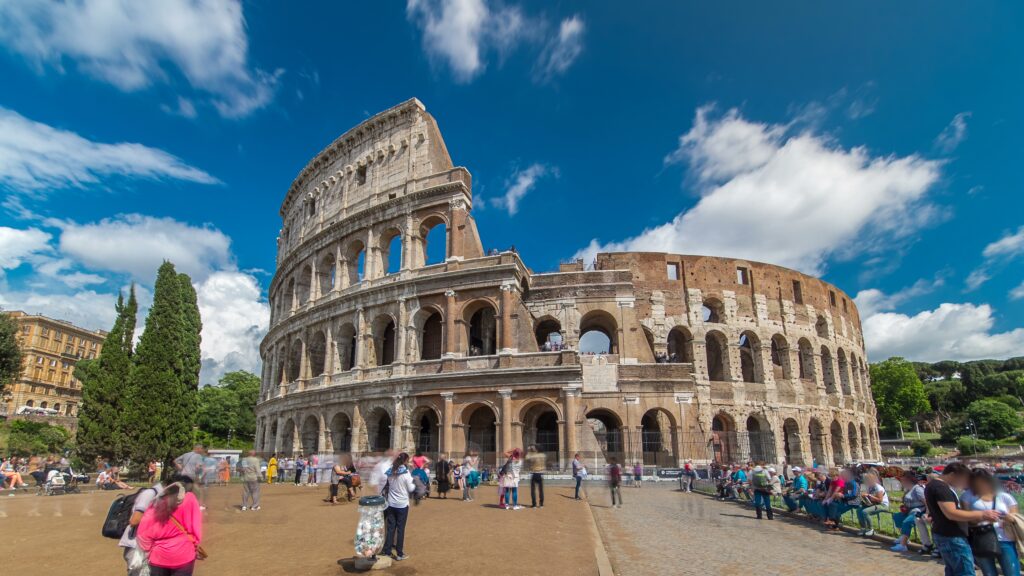
Rome, the capital of Italy, is a city steeped in thousands of years of history. With structures like the Colosseum, Pantheon, and St. Peter’s Basilica, its ancient monuments showcase remarkable architecture that has stood the test of time. The city’s Baroque and Renaissance-era churches, fountains, and piazzas also add to its architectural beauty. The best time to visit is in the spring (April to June) when the weather is mild, and the city is less crowded. Rome’s timeless architecture invites visitors to step back in time and experience its grandeur.
As you wander through Rome, the blend of classical ruins and elegant Renaissance buildings becomes evident. The narrow cobbled streets and expansive squares create a magical atmosphere, perfect for exploration. Many of the city’s historic sites are concentrated in the central areas, making them easy to visit. Whether you are drawn to its ancient temples or grand palaces, Rome offers something for everyone. Its architecture and rich history continue to attract travelers year-round.
Paris, France

Paris is a city known for its timeless beauty, from the iconic Eiffel Tower to the grand Notre-Dame Cathedral. The French capital is a masterpiece of architecture, with historical landmarks like the Louvre Museum, Arc de Triomphe, and Hôtel de Ville. The charming streets lined with Haussmannian buildings offer a unique glimpse into Parisian style. Spring and early autumn (April to October) are the best times to visit, offering pleasant weather and fewer tourists. Paris’ historic districts, like Le Marais and Montmartre, are filled with classic architecture and artistic flair.
In addition to its famous monuments, Paris features stunning examples of Gothic, Renaissance, and Neoclassical architecture. The bridges over the Seine River, like Pont Alexandre III, are striking examples of 19th-century design. The city also has a wealth of art galleries, mansions, and theatres that reflect Paris’s status as a cultural hub. Strolling through the city allows you to discover countless charming corners and hidden architectural gems. Paris remains a top destination for architecture lovers and history enthusiasts alike.
London, United Kingdom

London, the capital of the UK, blends historic architecture with modern designs. Landmarks like the Tower of London, Westminster Abbey, and Buckingham Palace show off its regal and medieval past. Georgian townhouses and Victorian-style buildings line many of London’s streets, creating a picturesque backdrop. The best time to visit London is in the spring (March to May), when the gardens bloom and the weather is ideal for sightseeing. Each building in London has a story, making it a perfect city for those interested in history and architecture.
London’s landmarks reflect the wealth of British history and influence from centuries past. The city’s diverse architectural styles include Romanesque, Gothic, and Palladian, with iconic structures like St. Paul’s Cathedral standing tall as examples. The city’s royal and government buildings, like the Palace of Westminster, offer a glimpse into its imperial past. Modern skyscrapers now stand alongside ancient structures, creating an exciting architectural contrast. Exploring London’s historic heart, from Covent Garden to the West End, reveals timeless beauty around every corner.
Prague, Czech Republic
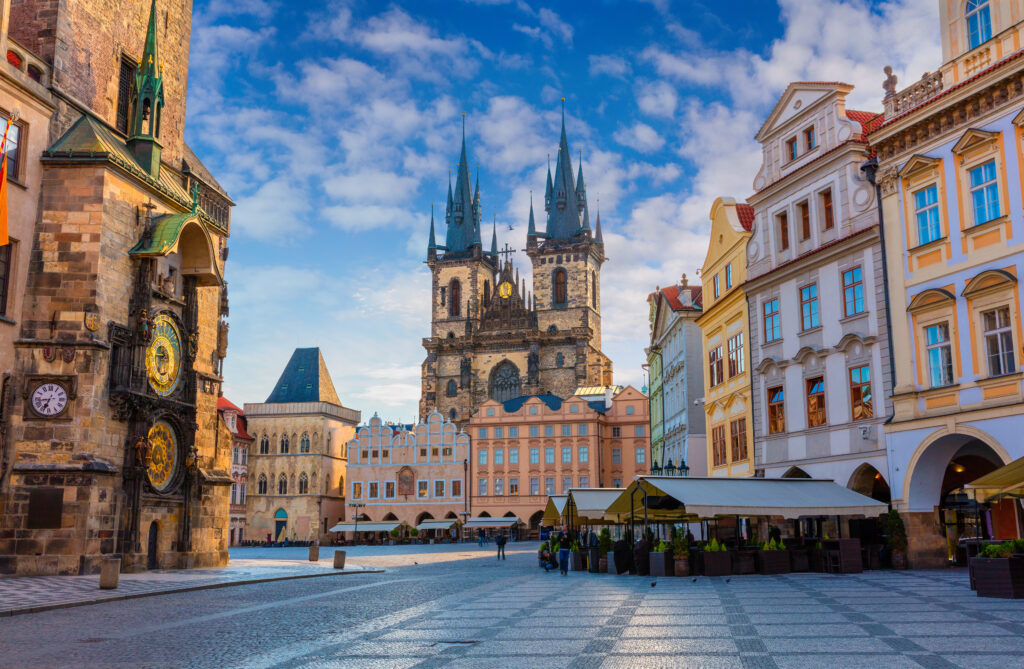
Prague, the capital of the Czech Republic, is a city that feels like stepping into a fairy tale. Its Old Town, a UNESCO World Heritage site, is full of medieval architecture, Gothic churches, and Baroque palaces. The Prague Castle, dating back to the 9th century, is a focal point of the city’s rich history and impressive design. The best time to visit is during the autumn months (September to November) when the city is less crowded, and the foliage adds to the charm. The historic centre, with its cobblestone streets and colorful buildings, offers a true taste of Old Europe.
Prague’s architectural heritage spans several centuries, with each era leaving its mark. The city is famous for its unique mixture of Romanesque, Gothic, Renaissance, and Baroque buildings. Structures like the Charles Bridge and St. Vitus Cathedral are must-sees for any architecture lover. Prague’s Old Town Square, with its charming pastel-colored buildings, is perfect for an afternoon stroll. The city’s picturesque beauty and affordable travel options make it a popular destination for tourists seeking historic architecture.
Budapest, Hungary
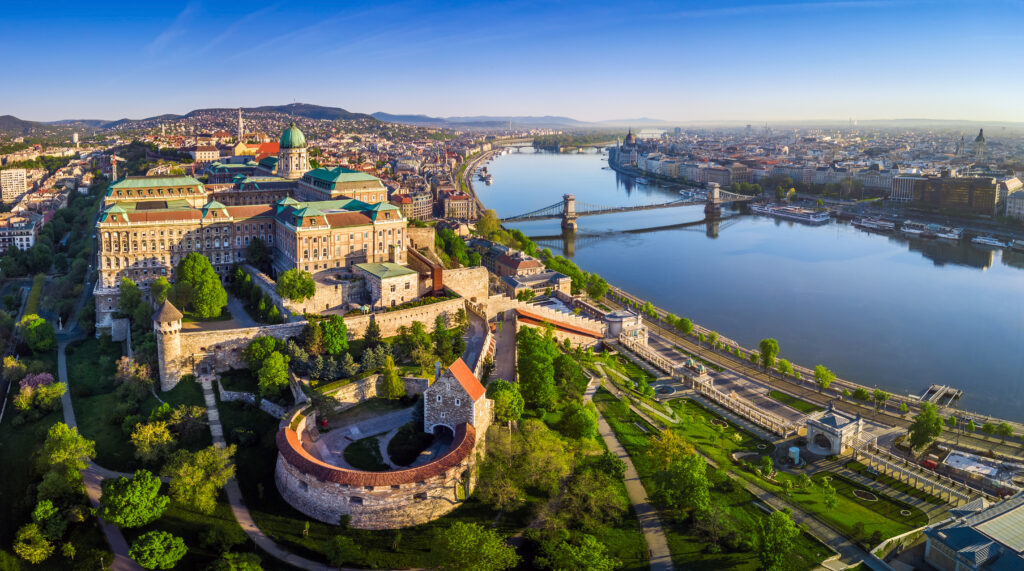
Budapest, the capital of Hungary, is a city of grand architecture and old-world charm. The city is divided by the Danube River, with Buda and Pest offering distinct architectural styles. Highlights include the Royal Palace, the Hungarian Parliament Building, and Fisherman’s Bastion. The best time to visit is in the spring (April to May) or early autumn (September to October) when the weather is mild, and the crowds are smaller. Budapest’s iconic structures are perfect for anyone interested in both historical and architectural wonders.
Budapest’s buildings reflect a range of architectural influences, from Romanesque to Gothic and Art Nouveau. The Parliament Building, with its striking neo-Gothic design, is one of the most photographed landmarks. The city’s thermal baths and bridges, like the Chain Bridge, offer a unique glimpse into Budapest’s architectural past. The city is a fusion of old-world beauty and vibrant modern culture, making it a fascinating place to visit. Whether you’re exploring the cobbled streets of Buda or the grand boulevards of Pest, Budapest’s architecture offers something for every traveler.
Vienna, Austria
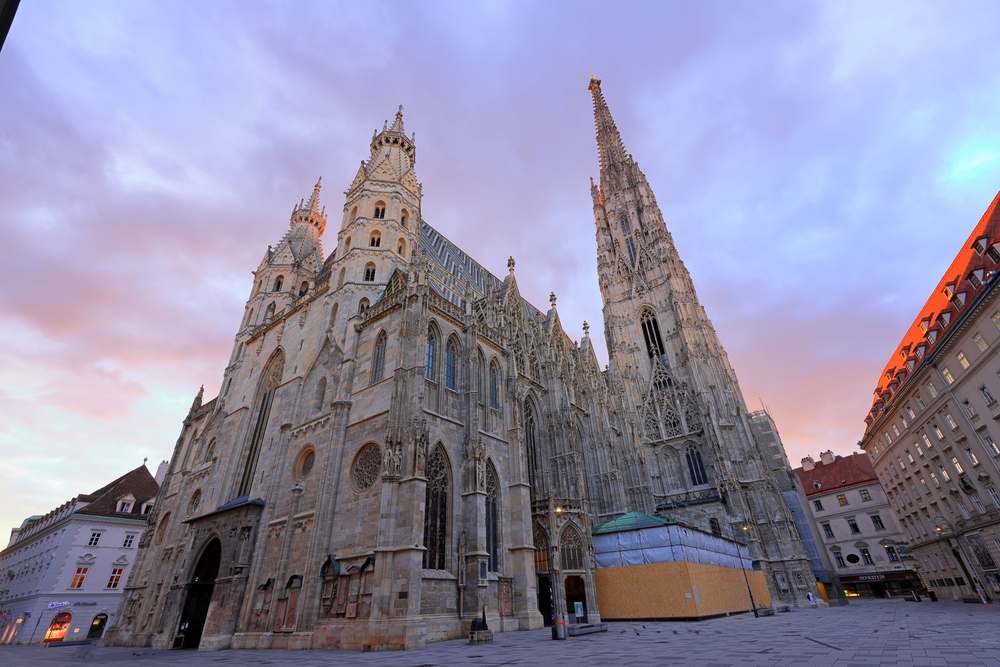
Vienna, the capital of Austria, is known for its imperial architecture, including the grand Hofburg Palace and the stunning St. Stephen’s Cathedral. The city’s Baroque and Neo-Classical buildings line many streets, with ornate palaces and magnificent gardens. Vienna’s architecture tells the story of its past as the heart of the Austro-Hungarian Empire. The best time to visit is during the spring or early autumn months (April to October) when the weather is perfect for outdoor exploration. Vienna’s rich architectural heritage is combined with its cultural significance, making it a must-see for anyone interested in history.
The city offers a mixture of opulent palaces and classical music halls, from the Schönbrunn Palace to the Vienna State Opera. The Ringstrasse, a circular boulevard, is lined with monumental buildings like the Austrian Parliament and the University of Vienna. Vienna’s commitment to preserving its architectural history has earned it a place on the UNESCO World Heritage list. Visitors can admire its palatial buildings, historic squares, and charming cafés. Vienna’s architectural treasures continue to attract visitors year after year, with something new to discover in every district.
Berlin, Germany
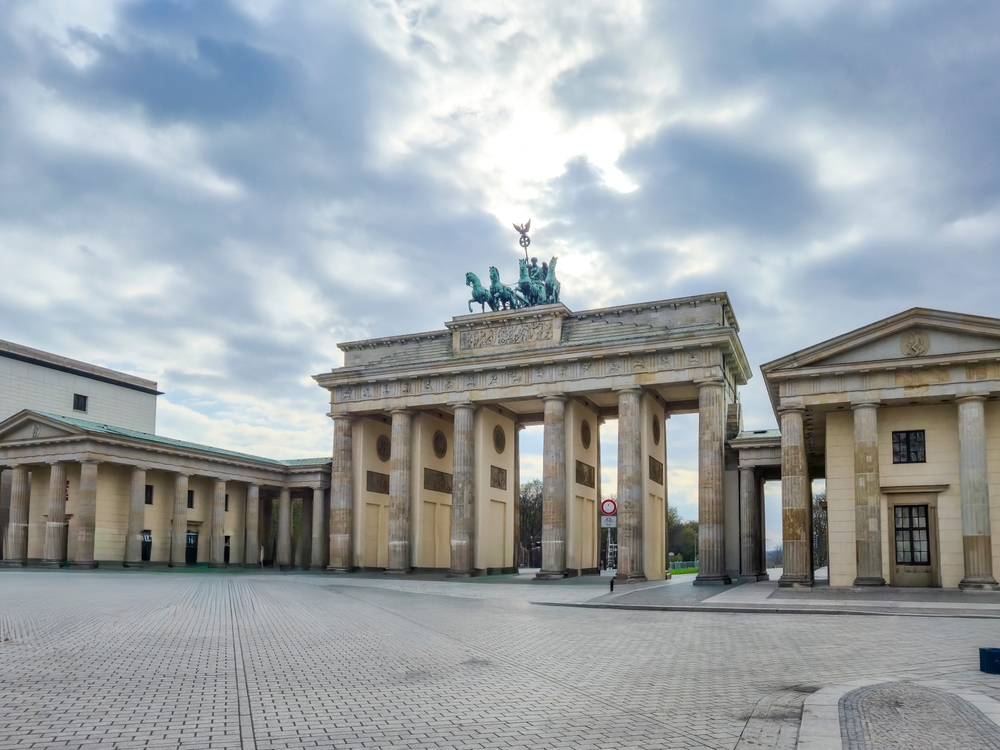
Berlin, the capital of Germany, is a city where history and modernity blend seamlessly. The city’s past is evident in the grand Brandenburg Gate and the Reichstag Building, both symbols of Berlin’s role in European history. The neoclassical architecture of Unter den Linden and the remnants of the Berlin Wall add to the city’s historical atmosphere. The best time to visit Berlin is in the late spring (May to June) or early autumn (September to October), when the weather is pleasant and ideal for exploring. Berlin’s architectural diversity reflects its turbulent past and vibrant present.
From medieval structures to contemporary designs, Berlin offers a wide range of architectural experiences. The Berlin Cathedral and Charlottenburg Palace are standout examples of Baroque and classical designs. The city is also home to innovative modern buildings like the Berlin Hauptbahnhof, one of Europe’s most impressive train stations. The interplay between historical and modern architecture makes Berlin a unique destination. Its rich history and forward-thinking designs ensure that the city remains a top destination for architecture lovers.
Seville, Spain
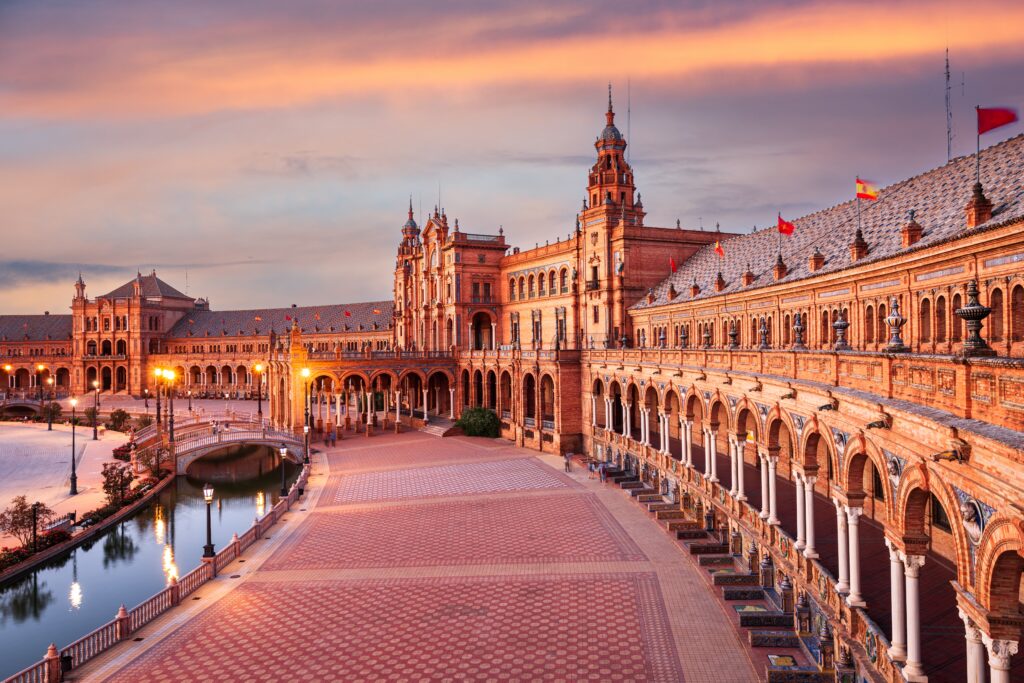
Seville, located in southern Spain, is known for its intricate Moorish and Gothic architecture. The Alcázar of Seville, a royal palace built by Moorish kings, is a stunning example of Mudejar architecture. The Seville Cathedral, the largest Gothic cathedral in the world, and the Giralda Tower are among the city’s most iconic landmarks. The best time to visit Seville is in the spring (March to May) when the city’s gardens are in bloom, and the weather is perfect. Seville’s historical architecture reflects its diverse cultural influences over centuries.
The city is also famous for its stunning plazas, like Plaza de España, a semicircular building with intricate tilework. The narrow, winding streets of Seville’s Barrio Santa Cruz are filled with charming buildings, offering a glimpse into the city’s Moorish past. Seville’s architectural wonders combine Islamic, Christian, and Renaissance styles, creating a unique blend of design. The city’s mix of colorful buildings and green spaces adds to its visual appeal. Seville continues to captivate visitors with its rich architectural and cultural heritage.
Madrid, Spain
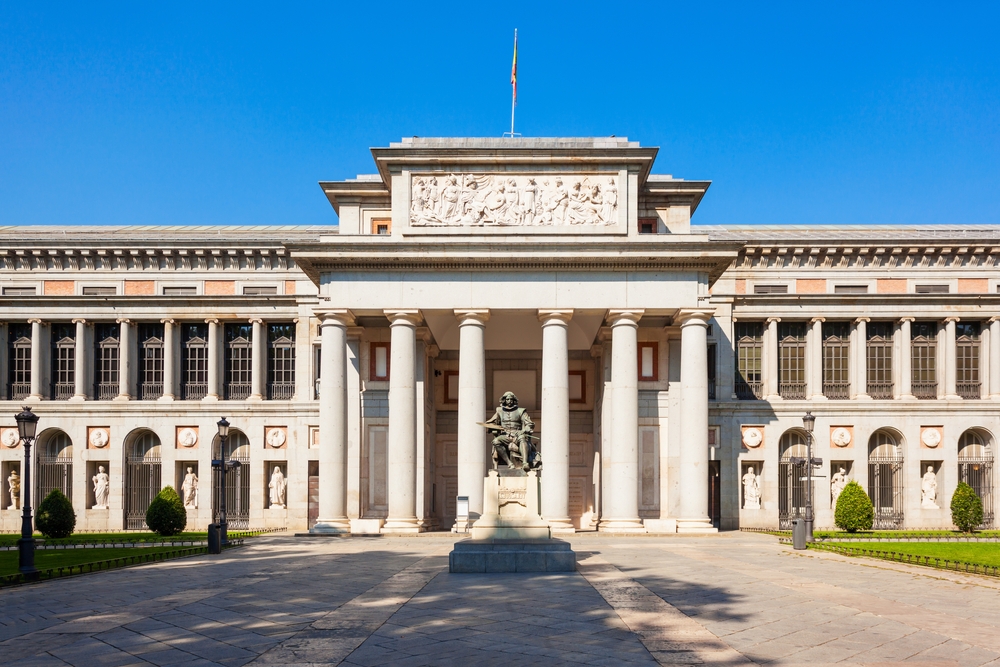
Madrid, Spain’s capital, boasts a stunning array of historic architecture that spans several centuries. The Royal Palace, with its grand façade and lush gardens, is one of the city’s most iconic buildings. The Prado Museum, housed in a neoclassical building, offers another example of Madrid’s architectural beauty. The best time to visit Madrid is in the spring (March to May) or autumn (September to November) when the weather is warm but not too hot. Madrid’s combination of historic landmarks and modern buildings makes it a fascinating city to explore.
Madrid’s historic architecture reflects its status as a European cultural hub. The Plaza Mayor, with its Spanish Baroque style, is a perfect example of the city’s architectural heritage. The city’s avenues are lined with grand buildings from the Habsburg era, while modern constructions add a contemporary touch. Madrid’s streets are a mix of old and new, offering something for everyone. Whether you’re admiring the architecture of its palaces or strolling through its art-filled museums, Madrid is a treasure trove of historic buildings.
Lisbon, Portugal
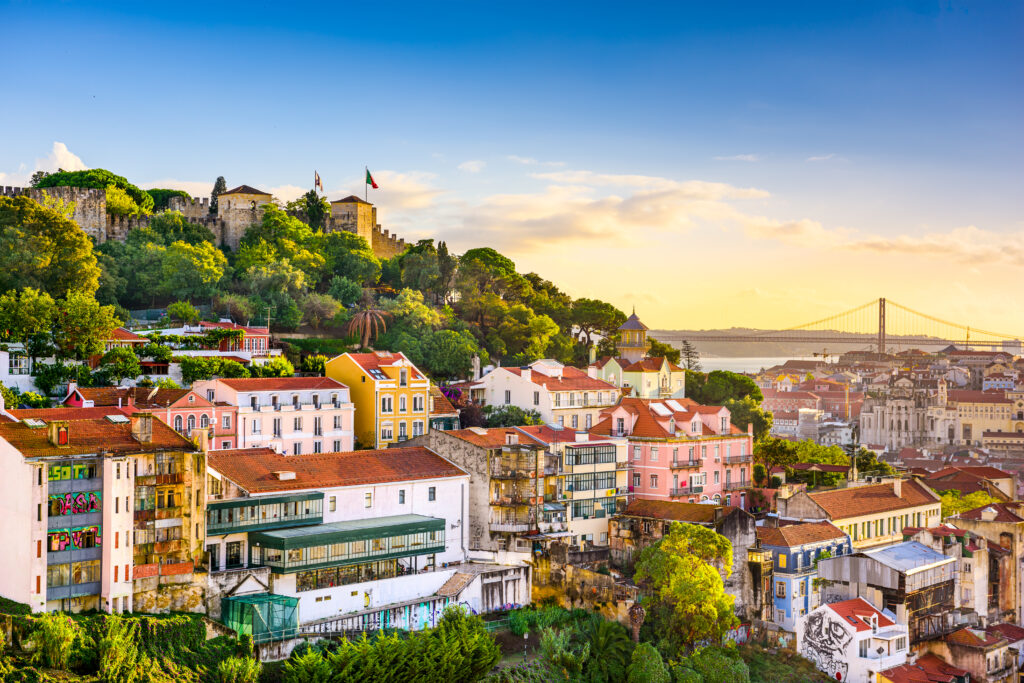
Lisbon, the capital of Portugal, is famous for its colorful buildings and historic landmarks. The Belém Tower, a symbol of the city’s maritime past, and the Jerónimos Monastery are two of Lisbon’s most iconic structures. The city’s tiled facades, intricate balconies, and narrow streets showcase a rich architectural history. The best time to visit Lisbon is during the spring (April to June) or autumn (September to October), when the city enjoys mild weather and fewer tourists. Lisbon offers a delightful mix of old-world charm and contemporary influences.
The city’s historic districts, like Alfama and Baixa, are filled with traditional Portuguese architecture, including the famous azulejos (decorative ceramic tiles). Lisbon’s buildings reflect a blend of Moorish, Baroque, and Pombaline styles, adding to its architectural diversity. Landmarks like the Santa Justa Lift and the Águas Livres Aqueduct are unique features of the city’s history. Lisbon’s elevated position on seven hills provides stunning views of the Tagus River and its architectural treasures. The city’s timeless appeal makes it a must-visit destination for architecture lovers.
Amsterdam, Netherlands
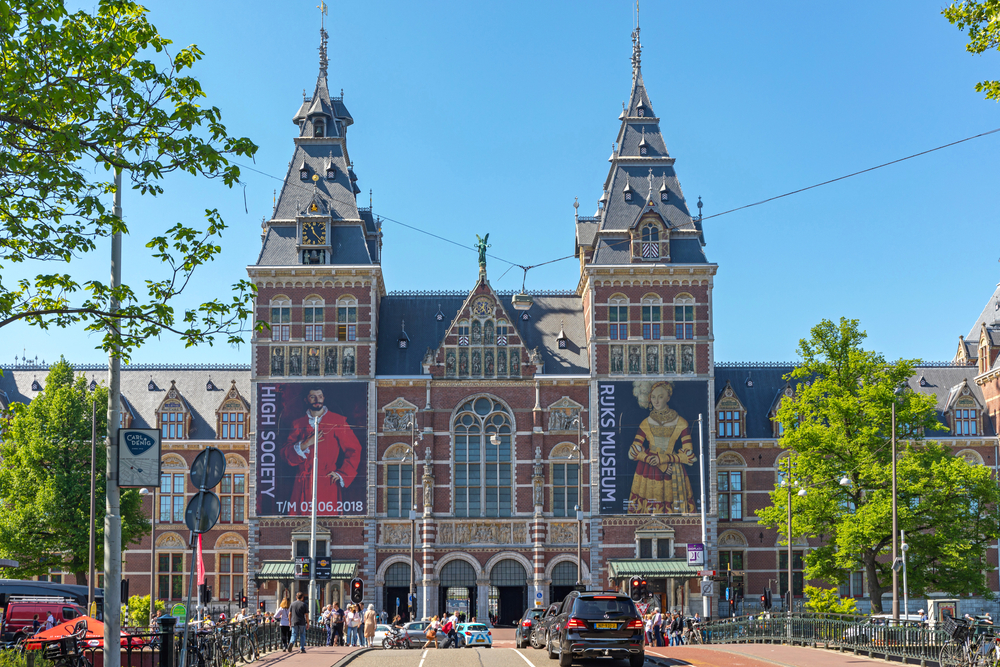
Amsterdam, the capital of the Netherlands, is a city known for its charming canals and historical architecture. The city’s Golden Age buildings, such as the Royal Palace and the Rijksmuseum, are prime examples of 17th-century Dutch architecture. The narrow, gabled houses along the canals create a picturesque atmosphere that is unique to the city. The best time to visit Amsterdam is in the spring (April to May) when the tulips are in full bloom, and the weather is perfect for a canal-side stroll. Amsterdam offers a stunning blend of old-world charm and modern vitality.
Amsterdam’s architecture is defined by its canals and the elegant, narrow houses that line them. The city’s blend of Renaissance, Baroque, and modernist styles creates a fascinating mix of historic buildings. Landmarks such as the Anne Frank House and the Van Gogh Museum offer a glimpse into the city’s cultural heritage. Whether exploring the canal belt or visiting its museums, Amsterdam provides plenty of architectural wonders to discover. Its timeless beauty and rich history continue to captivate visitors from around the world.
Athens, Greece
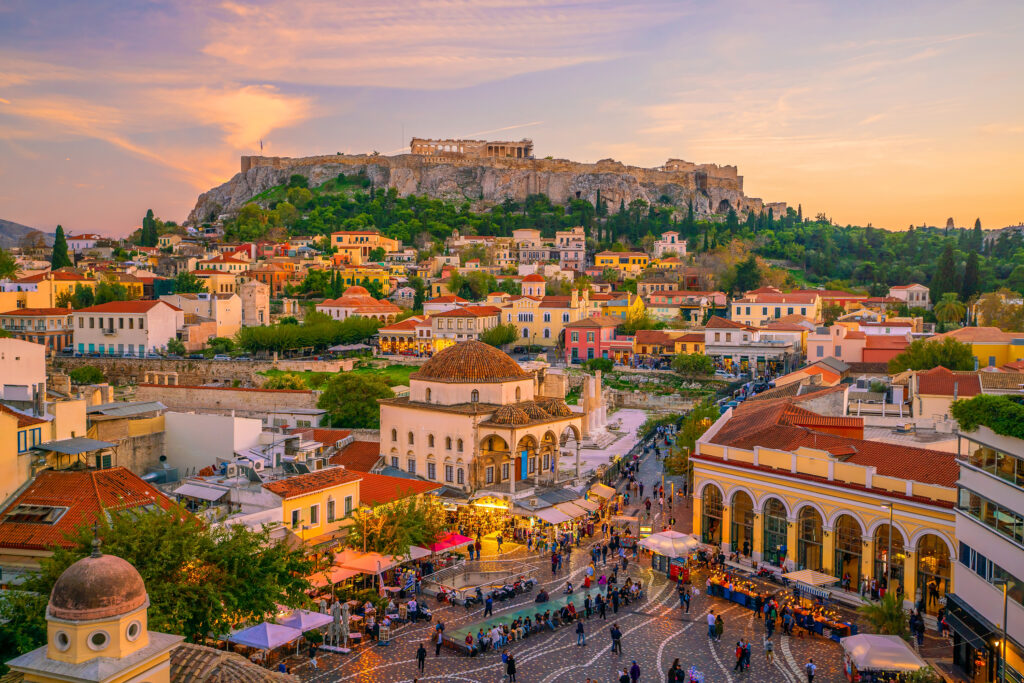
Athens, the capital of Greece, is a treasure trove of ancient architecture and history. The iconic Parthenon, perched on the Acropolis, is one of the world’s most famous landmarks, showcasing classical Greek architecture at its finest. The Temple of Olympian Zeus and the ancient Agora add to the city’s rich architectural heritage. The best time to visit Athens is in the spring (March to May) or early autumn (September to November), offering mild weather and fewer tourists. Athens combines ancient ruins with vibrant urban life, making it an incredible destination for history and architecture enthusiasts.
From the neoclassical grandeur of Syntagma Square to the medieval charm of Plaka, Athens’ architecture spans multiple eras. The city’s streets are lined with neoclassical buildings, offering a glimpse into the influence of 19th-century Greek architects. Visiting the Acropolis Museum allows travelers to further explore the city’s ancient past through its stunning collections. Athens’ blend of classical architecture with modern influences creates an intriguing urban landscape. The city’s architectural landmarks continue to captivate visitors from all over the world.
Istanbul, Turkey
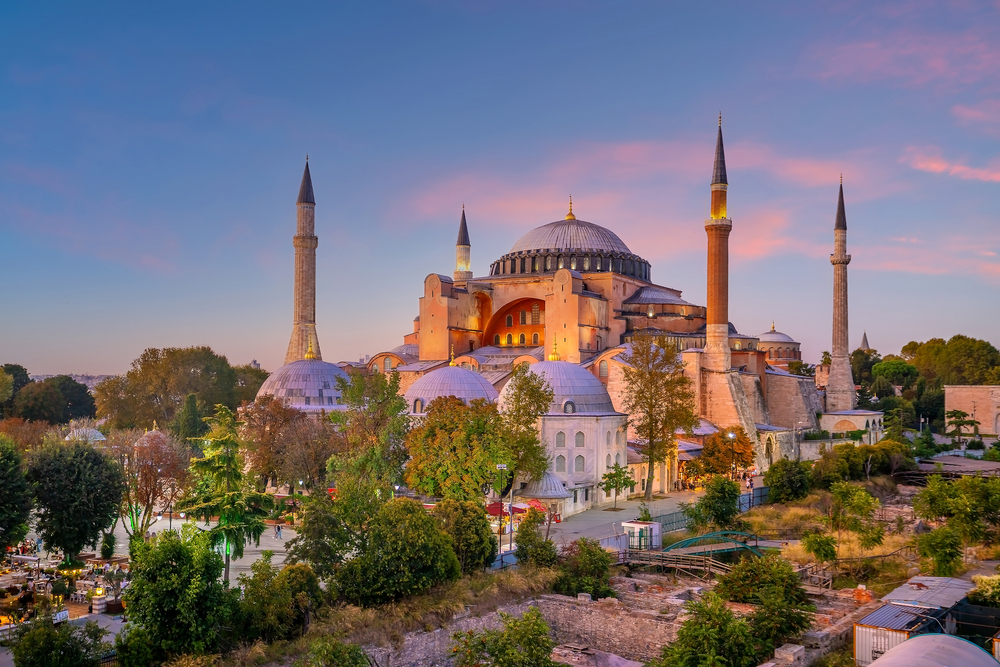
Istanbul, straddling two continents, is a unique city where East meets West. The Hagia Sophia, originally a church and later a mosque, is an architectural marvel blending Byzantine and Ottoman styles. The Blue Mosque, Topkapi Palace, and Basilica Cistern further exemplify Istanbul’s rich architectural history. The best time to visit is during the spring (April to June) and autumn (September to November) when the weather is pleasant, and the city is less crowded. Istanbul’s architectural diversity makes it a fascinating city to explore, with landmarks from the Byzantine, Roman, and Ottoman empires.
Istanbul’s skyline is dotted with minarets and domes, creating a stunning visual appeal. The city’s old town, Sultanahmet, offers a glimpse into its ancient past with its majestic palaces and mosques. The mixture of Islamic, Byzantine, and Roman architecture gives Istanbul a distinct and rich character. The Grand Bazaar and Spice Market add to the city’s historic atmosphere, with their colorful stalls and labyrinthine layout. Istanbul’s architectural beauty is only enhanced by the views of the Bosphorus Strait that divides the city.
Cairo, Egypt
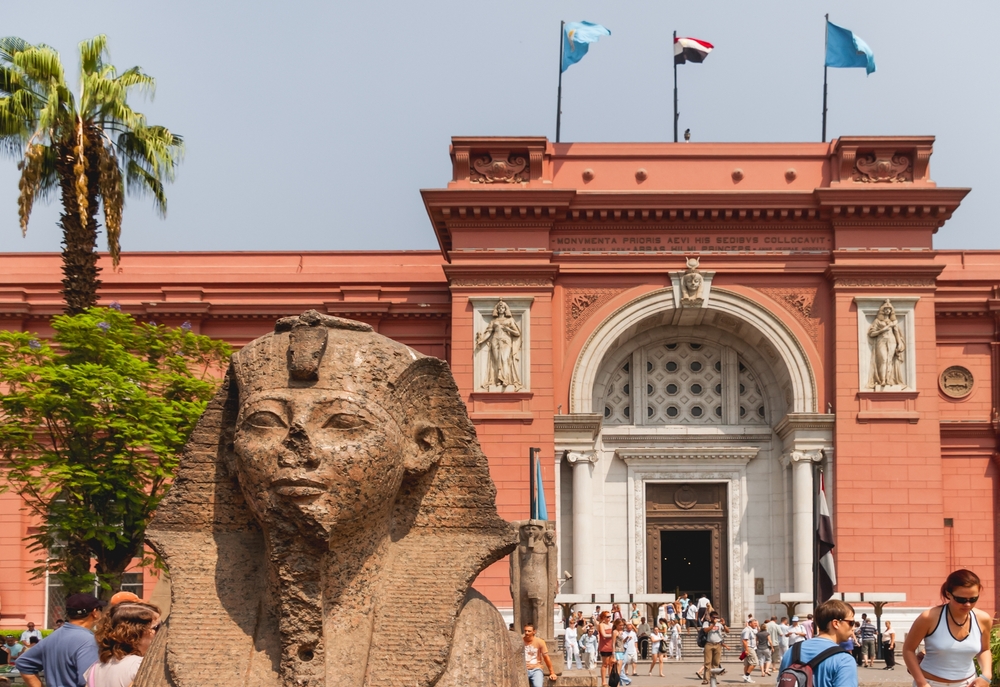
Cairo, the capital of Egypt, is a city that’s home to some of the world’s most iconic structures. The Great Pyramids of Giza and the Sphinx are among the most famous architectural wonders, standing as testaments to ancient Egyptian engineering. Islamic Cairo, with its mosques, madrasas, and historic buildings, offers a glimpse into the city’s medieval past. The best time to visit is in the spring (March to May) or autumn (September to November), when the weather is cooler. Cairo is a blend of ancient monuments and Islamic architecture that offers an unforgettable cultural experience.
Cairo’s cityscape is filled with both ancient and modern architecture, making it a truly diverse destination. The Cairo Citadel, with its stunning mosques and views of the city, is another must-see landmark. The narrow streets of Islamic Cairo are home to hundreds of historic buildings that date back to the Fatimid and Mamluk periods. The Egyptian Museum, located in Tahrir Square, houses the world’s largest collection of ancient Egyptian artifacts. Cairo’s ability to preserve its ancient monuments while embracing modernity makes it a fascinating place to visit.
St. Petersburg, Russia
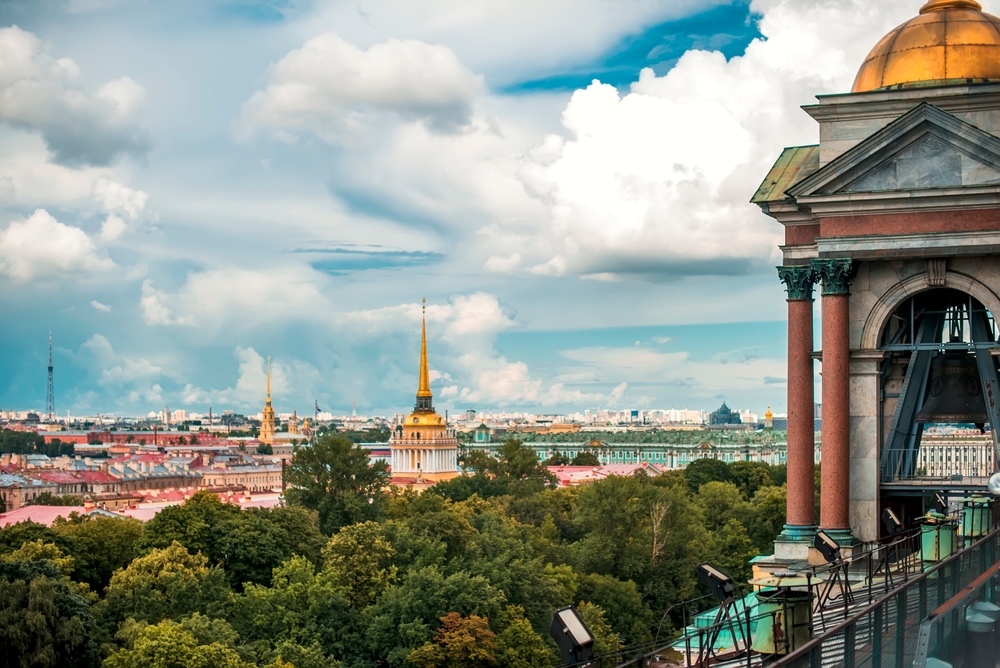
St. Petersburg, the cultural capital of Russia, is known for its elegant palaces and grand architecture. The Winter Palace, home to the Hermitage Museum, is an example of the city’s Baroque and Rococo styles. The Church of the Savior on Spilled Blood, with its vibrant onion domes, is another stunning example of Russian architectural design. The best time to visit is in late spring (May to June) when the White Nights phenomenon offers long days and mild temperatures. St. Petersburg’s architecture reflects its imperial history, making it a must-visit for architecture lovers.
St. Petersburg is often compared to Venice for its canals and bridges, with the Neva River serving as the city’s lifeblood. The Peter and Paul Fortress and the nearby St. Isaac’s Cathedral provide magnificent views and insight into the city’s past. The city’s palatial squares, like Palace Square, are lined with architectural masterpieces that tell the story of Russia’s imperial era. St. Petersburg is filled with museums, theaters, and historical sites that complement its stunning architecture. Its artistic and architectural heritage is sure to captivate any visitor.
Florence, Italy
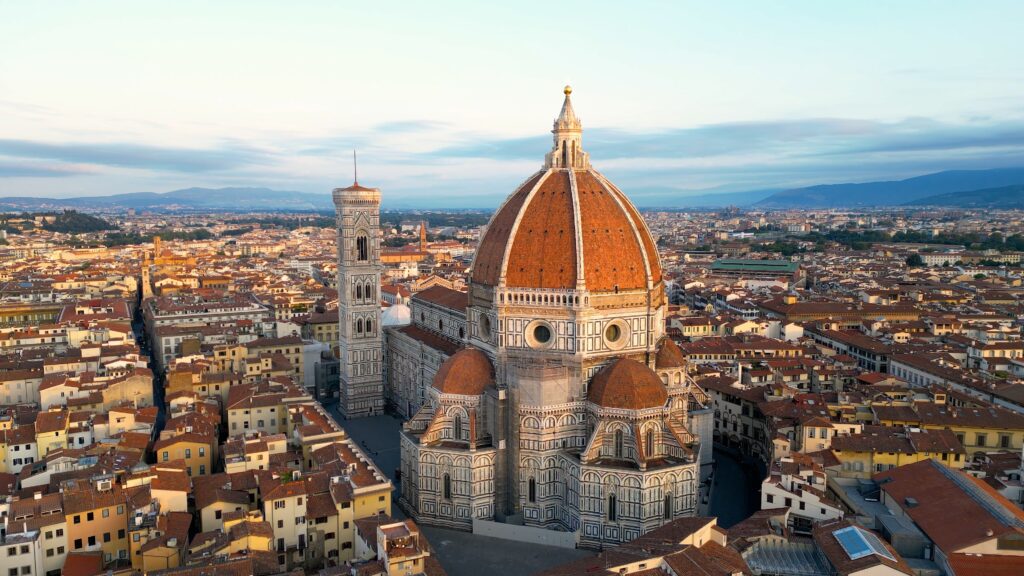
Florence, the capital of Tuscany, is a city synonymous with the Renaissance. The Florence Cathedral, with its iconic dome designed by Brunelleschi, stands at the heart of the city. The Uffizi Gallery and Palazzo Vecchio showcase the grandeur of Renaissance art and architecture. The best time to visit Florence is during the spring (April to June) or autumn (September to October), when the weather is mild and the city is less crowded. Florence is a living museum of Renaissance architecture and art, with landmarks that attract visitors year-round.
Florence’s cityscape is a stunning mix of medieval and Renaissance buildings, with palaces, churches, and museums dotting the city. The Ponte Vecchio, a medieval stone bridge, is a favorite among visitors, offering beautiful views of the Arno River. The city’s historic center is a UNESCO World Heritage site, preserving the essence of Renaissance Italy. Florence is also home to grand piazzas, such as Piazza della Signoria, where visitors can admire architectural masterpieces. With its rich history and stunning architecture, Florence is a must-visit for anyone interested in the Renaissance.
Mexico City, Mexico
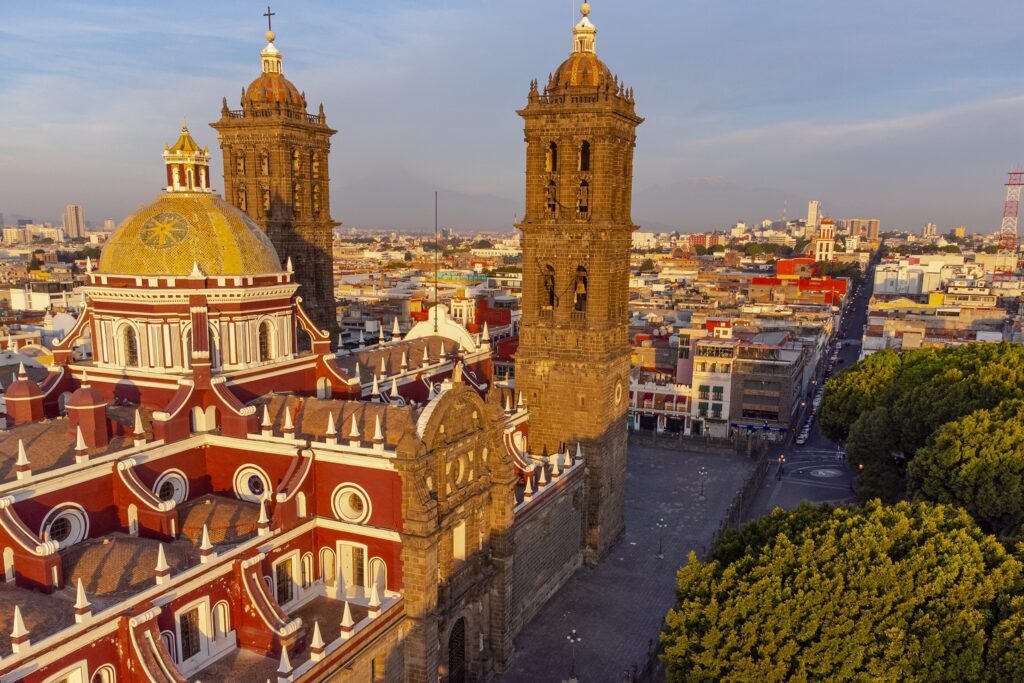
Mexico City, the capital of Mexico, is a vibrant hub of history and architecture. The Zócalo, or main square, is surrounded by colonial-era buildings such as the Metropolitan Cathedral and the National Palace. The city’s rich history is reflected in its architecture, from Aztec ruins to Spanish colonial influences. The best time to visit Mexico City is during the dry season (November to April), when the weather is more temperate. Mexico City’s architecture is a blend of pre-Columbian, colonial, and modern styles, making it a diverse city to explore.
The city is also home to the famous Palacio de Bellas Artes, a stunning example of Art Nouveau and Art Deco architecture. The Chapultepec Castle, with its European-inspired design, offers panoramic views of the city. Mexico City’s diverse architecture tells the story of its complex past and modern transformation. The city’s vibrant culture and historic buildings make it a fascinating destination for architecture lovers. Whether exploring its ancient ruins or colonial plazas, Mexico City is a city of architectural contrasts.
Kyoto, Japan

Kyoto, Japan’s ancient capital, is famous for its beautiful temples, gardens, and traditional wooden houses. The Kinkaku-ji, or Golden Pavilion, and the Fushimi Inari Shrine are two of the city’s most iconic structures. Kyoto’s historic districts, such as Gion, are filled with traditional machiya houses, offering a glimpse into the past. The best time to visit Kyoto is in the spring (March to May) or autumn (September to November), when the city’s gardens and temples are especially picturesque. Kyoto is the perfect destination for anyone seeking a connection to Japan’s traditional architecture.
Kyoto’s temples, shrines, and palaces showcase the best of Japanese Zen and Shinto architecture. The city’s wooden buildings and sweeping rooftops reflect traditional Japanese craftsmanship. Visitors can enjoy the serenity of the city’s many gardens, which are designed to harmonize with the architecture. The Gion district, with its tea houses and narrow streets, offers a timeless atmosphere. Kyoto’s blend of history, culture, and architecture makes it one of the most charming cities in Japan.
Jerusalem, Israel

Jerusalem, a city sacred to three major religions, is filled with timeless architecture that spans millennia. The Western Wall, the Dome of the Rock, and the Church of the Holy Sepulchre are some of the city’s most significant landmarks. Jerusalem’s Old City, a UNESCO World Heritage site, is a maze of narrow streets, ancient walls, and sacred sites. The best time to visit Jerusalem is during the spring (March to May) or autumn (September to November), when the weather is mild and comfortable. Jerusalem’s architecture is a testament to its religious and cultural significance, making it a must-see for history enthusiasts.
The city’s architecture blends Jewish, Christian, and Islamic influences, creating a unique cultural landscape. The Dome of the Rock, with its golden dome, is one of the most recognizable buildings in Jerusalem. The city’s ancient gates, including the Jaffa Gate and Damascus Gate, add to its historical charm. Walking through Jerusalem’s Old City offers a glimpse into its rich past, with its ancient structures and religious sites. Jerusalem’s timeless architecture, steeped in history, continues to draw visitors seeking to explore its sacred heritage.
This article originally appeared on Avocadu.
